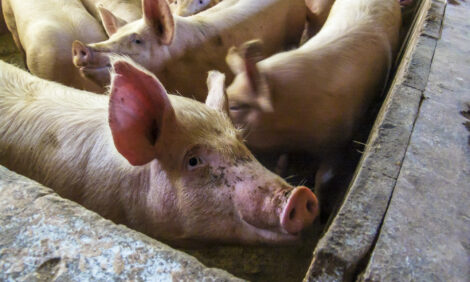



CME: Hog Inventories Close to Analysts' Predictions
US - USDA’s quarterly Hogs and Pigs Report, released on Friday, indicated hog inventories and expected output very close to analysts’ pre-report estimates and is being called by the trade as neutral to possibly slight bearish, especially for the deferred months, according to Steve Meyer and Len Steiner.Key data from the report as well as the average of analysts’ pre-report estimates are in the table below.

Some highlights are:
- There were 64.991 million pigs on US farms on 1 September, 2.6 per cent fewer than one year ago and almost precisely the same as the average pre-report estimate. Of these, 59.221 million were market hogs. That number is 2.7 per cent lower than last year and again almost precisely the same as pre-report expectations.
- Reasonable agreement between the pre-report estimates and USDA’s weight category inventories with the exception of the 180-lbs. and over category for which, as we reported on Friday, the analyst appeared to have collectively over-estimated based on September slaughter. The USDA 180 & over inventory agreed almost perfectly with to-date September slaughter. The important fact about the weight categories is that the numbers get progressively closer to year-ago levels as one moves downward. is likely that we have seen our largest year-on-year slaughter reductions.
- 5.770 million breeding hogs on US farms at 1 September, 1.8 per cent fewer than last year. That number is smaller than was expected. The difference of 0.7 per cent is not huge but it does imply that US producers have not rebuilt the breeding herd this summer. In fact, this September 1 breeding herd estimate was 18,000 head lower than the 1 June estimate. That is a bit of surprise given the low levels of sow slaughter — even relative to the smaller US sow herd — this summer and no clear pattern of gilt retention.
- A continuation of rising productivity. June’s breeding herd was 3 per cent smaller than last year and yet Jun-Aug farrowings were only 1.8 per cent lower than last year. Farrowing intentions for the 1 September breeding herd (1.8 per cent smaller) are down 1.2 per cent and UP 0.5 per cent in the Sep-Nov and Dec-Fab quarters. Market analyst Bob Brown of Oklahoma City pointed out on a media call sponsored by the National Pork Board that 99.95 per cent of the September breeding herd will, according to this report, farrow in the next 6 months That is the 5th highest such number in history and the second highest since September 2007.
- The lowest year-on-year increase in average litter size since the June-August quarter of 2007. 1.1 per cent growth is still nothing shabby and makes up for more than one-half of the reduction of the sow herd versus last year but it is a far cry from the 2 per cent-plus average of the past three years.
Weekly slaughter rates implied by the report appear in the chart below. The largest predicted reductions in slaughter are over the next 2 months with the yr/yr declines getting smaller. Based on this report, we will see no 2.3 million head weeks this fall, so US capacity should be easily sufficient. Yr/yr slaughter is not expected to go positive until June of 2011. Note that we have made no adjustments for imports from Canada since both market hog and feeder pig inshipments appear to have more-or-less stabilized.









